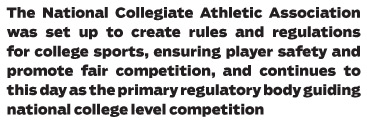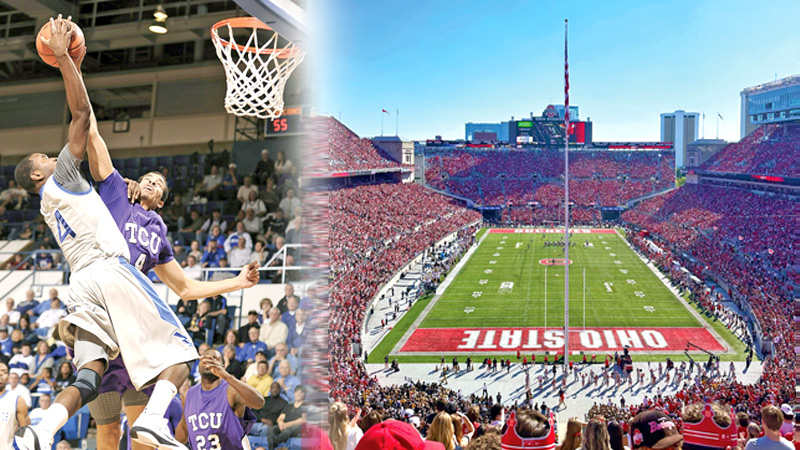 March Madness is almost over, and with it, yet another high octane season of college basketball that has tens of millions of Americans captivated each year. And basketball isn’t even the only sport played at the college level that has that same level of support, with the same degree of coverage as professional competitions.
March Madness is almost over, and with it, yet another high octane season of college basketball that has tens of millions of Americans captivated each year. And basketball isn’t even the only sport played at the college level that has that same level of support, with the same degree of coverage as professional competitions.
College sports in the United States are an integral part of the nation’s culture, generating immense enthusiasm, loyalty, and excitement across the country. Unlike in many other countries where professional sports dominate the landscape, college sports hold a unique place in American society. From March Madness to college football Saturdays, college sports provide a sense of identity, community, and pride for students, alumni, and local communities.
Much like professional sports on the international level, or even school sports here, rivalries are an essential aspect of this tradition. It’s at the very core of the appeal of college sports, with the origins of it being traced back to the first recorded intercollegiate competition: a rowing race between Harvard University and Yale University in 1852. This event took place on Lake Winnipesaukee in New Hampshire and marked the beginning of organized college athletics, and the Yale-Harvard Regatta remains a tradition to this day.
Cultural events
Over the next few decades, other sports such as baseball, track and field, and football began to take root on college campuses. Iconic matchups such as Ohio State vs. Michigan in football or Duke vs. North Carolina in basketball are more than mere games; they are cultural events that stir emotions and draw massive national attention. College football soon emerged as the most popular and influential college sport in the late 19th century.
Football’s rapid growth in popularity brought challenges, as the sport was notoriously violent and unregulated in its early years. The death of numerous players due to injuries prompted President Theodore Roosevelt to intervene in 1905, leading to the formation of the National Collegiate Athletic Association (NCAA).
The NCAA was set up to create rules and regulations for college sports, ensuring player safety and promote fair competition, and continues to this day as the primary regulatory body guiding national college level competition.
As the 20th century progressed, college sports continued to expand, with more universities forming teams in football, basketball, baseball, and other sports. College basketball gained national attention in the 1930s, and by 1939, the first NCAA basketball tournament was held, which later became the renowned “March Madness” event.
This tournament, along with college football bowl games, has become one of the most popular and widely viewed events in American sports. The mid-20th century saw increased commercialization of college sports, with the advent of television contracts and sponsorship deals. This led to the rise of college sports as a significant economic engine, generating revenue for universities and providing scholarships to talented athletes. With this incentive, even more schools and players would compete, altogether raising the level of competition and growing to the same level as professional sports in the country.
Controversy
However, this growth isn’t without controversy, as the issue of student-athlete compensation in college sports has been a highly debated topic in recent years. For decades, college athletes were considered amateurs and were not allowed to receive any form of financial compensation beyond scholarships and stipends for education-related expenses.
However, as college sports, especially football and basketball, have become multi-billion-dollar industries, many argue that athletes deserve a share of the revenue they help generate. Advocates for compensation point to how much of their lives athletes need to dedicate to their sport, the risks of injury, and the fact that coaches and universities profit immensely from their performance.
Recent changes, including the NCAA’s allowance for athletes to profit from their name, image, and likeness (NIL), have marked a shift toward more equitable treatment, but the debate over direct compensation and fair treatment of student-athletes continues.





